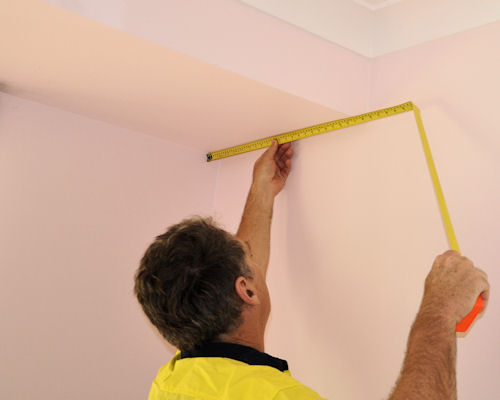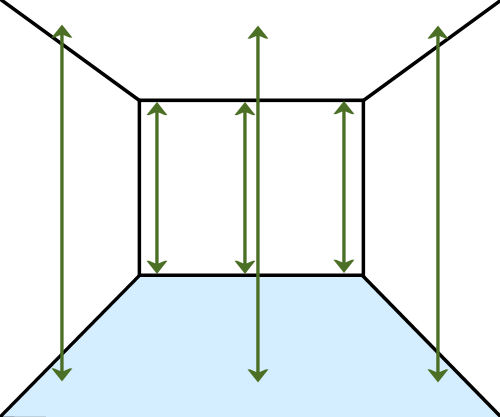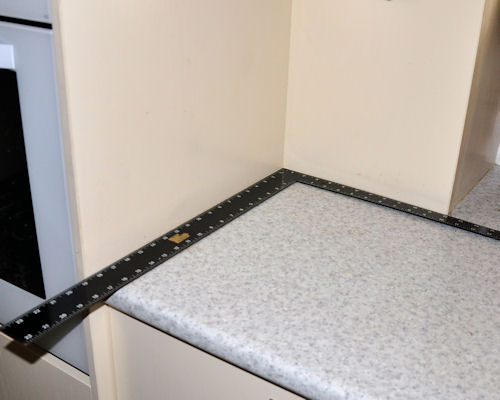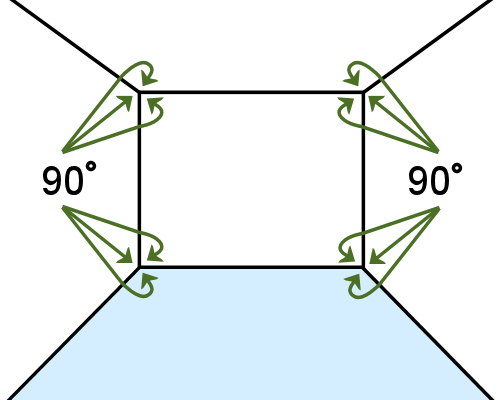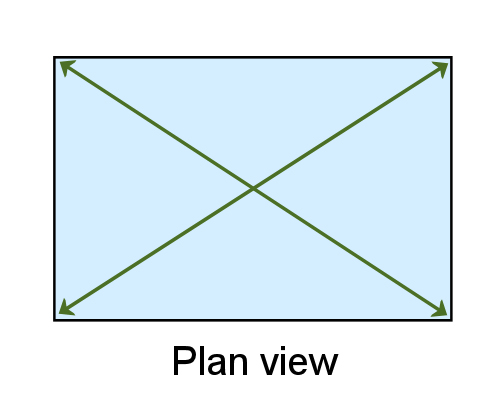Room dimensions
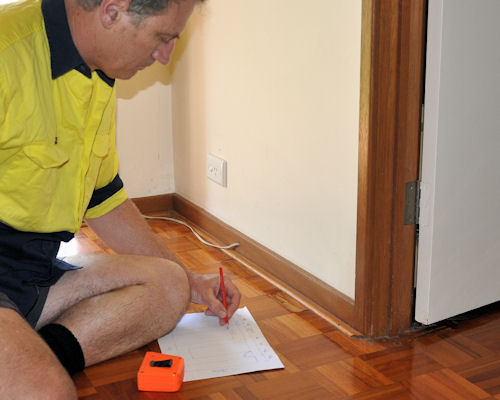 Audio for slide 2 (mp3 |6|KB)
Audio for slide 2 (mp3 |6|KB)
We discussed the process of sketching a floor plan and elevations in the unit: Installation requirements.
Go back to that unit now if you need to revise the symbols used in floor plans or the details of how to go about producing a quick sketch on-site.

 Audio for slide 3 (mp3 |6|KB)
Audio for slide 3 (mp3 |6|KB)
Wall to wall measurements
Wall to wall measurements should be taken at the top, middle and bottom of the walls. Don't forget to mark in the thickness of skirting boards if they've already been fitted.
Do this in two separate positions, so you can be confident you've allowed for the possibility that the walls aren't running parallel to each other.

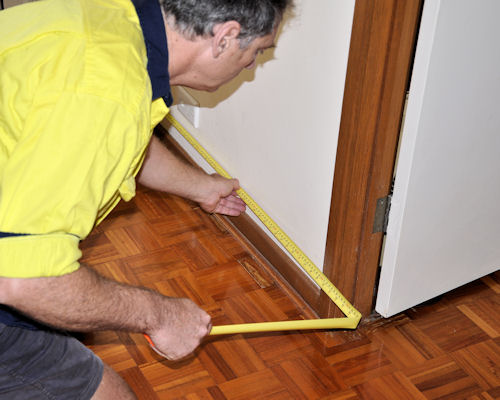 Audio for slide 5 (mp3 |6|KB)
Audio for slide 5 (mp3 |6|KB)
Doors, windows and other features
Doors, windows, columns and other features that will have an effect on your installation should be marked on an elevation of that wall. Depending on the wall, you might also need to include the positions of power points, plumbing outlets, phone sockets, air conditioning vents and other services.
We'll look at these in more detail in the lesson: Service outlets.

Learning activity
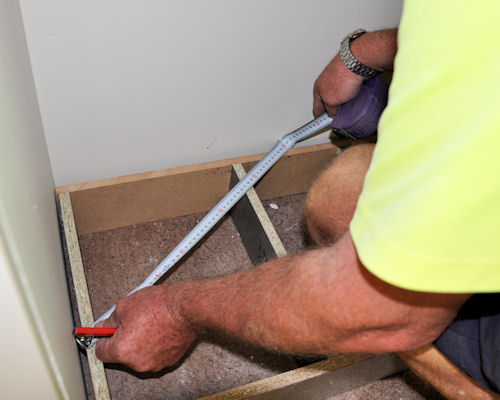 Audio for slide 10 (mp3 |6|KB)
Audio for slide 10 (mp3 |6|KB)
Try the 3, 4, 5 method for yourself to prove that it works. Get a tape measure, find a right angled corner that you know is square, and take the three measurements. Note that a 'unit' can be anything you like, as long as it's the same for all three sides of the triangle. So your measurements could be 3 m - 4 m - 5 m, or 300 mm - 400 mm - 500 mm, or 600 mm - 800 mm - 1000 mm, or another other multiple of 3 - 4 - 5.
You'll see a full explanation of this technique in the unit: Making measurements. Go to it now if you have any questions in your mind about how this technique works.



